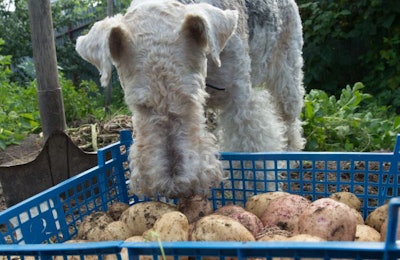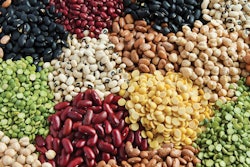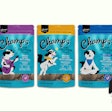
The market obsession with grain-free, novel or uncommon ingredients, and limited ingredient pet foods may bear some responsibility for reports of canine dilated cardiomyopathy, as opposed to singling out potatoes and legumes, according to one pet food industry consultant and scientist. The United States Food and Drug Administration recently announced reports of canine dilated cardiomyopathy (DCM) in dogs eating certain pet foods, particularly grain-free diets, containing high levels of potatoes or legumes seeds such as peas, lentils or beans.
Potatoes and legume seeds can serve as nutritious pet food ingredients , said Greg Aldrich, PhD, Kansas State University pet food program coordinator, president of consultancy Pet Food and Ingredient Technology Inc. and author of Petfood Industry’s Ingredient Insights column. However, formulators must balance legumes with other ingredients and pay special attention to key amino acids and their bioavailability, which is the potential for an animal’s body to absorb those protein building blocks.
"Some pet foods in the market have become overly ambitious about winning the horse race with the next new thing,” Aldrich said. “We need to get the message to the retailers and consumers that these extremes in ingredient composition may have consequences.”
“It's common knowledge in nutritional parlance that the legume seeds should be complimented in the diet with other ingredients to balance out the amino acid profile,” said Aldrich. “They're all tools in our toolbox to give us balanced nutrition… An ingredient is a nutrient delivery device.”
For example, in human diets, combining beans with rice provides a balance of essential amino acids, which are protein building blocks that the body can’t make on its own. Such a legume seed and cereal blend can form the basis of a balanced diet.
“We have lost that,” Aldrich said. “In some cases with the grain-free and limited ingredient diet [trend], we've lost sight of balance… If we're using a single ingredient to give us a complete diet, we're going to miss something.”
Are legumes and potatoes bad?
Certainly not, said Aldrich. But there can be “too much of a good thing” when it comes to nutrition. Legumes like peas, lentils, and chickpeas to name a few are high quality ingredients. They contribute meaningful levels of protein, fiber, and micronutrients to the dog diet. Likewise, potatoes are a high-quality starch source that have been used in pet foods for decades without issue. However, they are far from nutritionally complete by themselves, and are better left to the supporting role in the diet rather than the star feature.
Limited ingredient diets are not easy, Aldrich said. They often require that formulators supplement with synthetic amino acids, a supporting cast of essential fatty acids, and give special consideration to the type and quantity of dietary fiber.
The current drive for a short, simple ingredient labels complicates this effort to create a fully balanced diet, he said.
“Part of the confusion may come as a result of humans eating meals of various foods whereas the food that we provide pets is their complete diet - not just for a day but, for weeks and months,” he said. “We've got to cover all the bases.”
“We also have a significant need for additional data on some of these ingredients and how they interact in the process,” Aldrich said. “We especially, have need for longer-term feeding studies with a variety of breeds, sizes, and life stages. We would benefit in this industry from more long-term feeding studies and nutritional health assessments as we introduce these novel ingredients and the more extreme limited number of ingredients within a diet offering.”
Solutions for including potatoes and legume seeds in pet food
“We may be jumping to some conclusions and over zealous speculation about what really underlies the challenge with DCM as it relates to what the FDA statement has been,” he said. “There are probably more questions than there are answers at this stage of the game.”
“Until we've got more real solid information there may be some things that we can consider for prudent formulation,” Aldrich said. “My message is: limit the legume seeds. No more than about 20 percent of the formula, period, end of story. Then make sure you've got plenty of methionine, because that's easy to supplement in… It costs less than pennies.”
“The point is, don't put too many peas and beans in the diet to a point that you overwhelm the dog's digestive system’s ability to manage it,” he said. “And, verify the nutritional completeness with validation studies to confirm that the nutrition is truly available to the animal.”

















